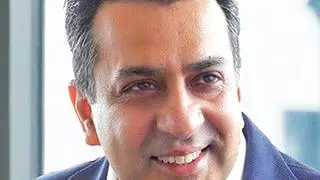Today, we stand on the precipice of a change in communications technology that is unlike anything we have seen before.
With an estimated 920 million subscribers, the Indian telecom market is the world's second largest. The mobile revolution has been a flag bearer of India's liberalisation, as consumers rich and poor realised the benefits of mobile phones. The spread of phones to remotest of corners is nothing short of a social revolution. We have made substantial progress in mobile telephony uptake and especially in mobile usage. Competition has driven down per-minute voice prices to the lowest in the world.
Infrastructure lagging
Though India has 76 per cent teledensity, compared with its BRIC peers, the country's infrastructure still requires a major improvement. In terms of mobile penetration, India is still substantially behind many other countries, especially Latin American countries. But the fundamentals are in place to take the mobile revolution beyond voice to embrace broadband for even more pronounced socioeconomic impact.
With new access technologies and the huge growth in the number of subscribers, the next decade will see unprecedented growth in mobile telephony as the number of subscribers may climb to five billion. In recent years, traffic levels have grown manifolds, and this trend is expected to continue well into the future, again bringing opportunities and changing the face of communications as we know it.
Broadband gap
India is home to many global software bigwigs that have harnessed the Internet's boundless possibilities to put the country on the global map. Yet, less than 14 million in the country have broadband connectivity. Our broadband penetration rate is around an eighth of the rate achieved in China. Given the paucity of fixed broadband in India, and the emergence of portable broadband devices that are much simpler to use than personal computers, it would seem logical to imagine that mobile broadband services would help to fill in the broadband gap in India in the same way that mobile voice services have done for voice.
Mobile phones are no longer just means to make voice calls and send messages but are the most viewed screens beaming news, television, music, emails and a host of internet content. In a recently conducted survey, 56 percent of the smartphone users in India access Internet on their phones multiple times a day in comparison with 53 per cent in the US. About half of India's population was born in the past two decades, and many of these youngsters may have first enjoyed the Internet over a wireless network. In time, they will be using their phones to do several of the things that computers now do in developed economies.
The Internet driven by mobile broadband will be the predominant platform to connect a billion people in India and provide access to a wide variety of content and applications. Telecom, media and the Internet and IT landscape will converge, bringing a corresponding increase in the types and numbers of service providers and the business models they use. The result will be both a huge opportunity and greater competition. Those providers who offer simple and easy-to-use solutions that bring connectivity to people and content will be the winners.
MOBILE BROADBAND
All flavours of telecom technology, be it 2G, 3G or TD-LTE (4G), are essential building blocks of India's mobile broadband. Already, mobile subscribers numbering in double-digit millions are provisioned for 3G and analysts predict that India will have highest number of 3G users by 2014, exceeding China, Japan and the US.
With the advent of 4G, India is no longer a late technology adopter, but a pioneer in mass commercial deployment of the latest in telecom technologies. As the demand for data continues to surge, 4G is a further part of the roll-call of network innovation that will meet customer needs.
Where 3G showed us the possibilities, 4G will make them fly and end-users will experience mobile broadband like never before. Browsing, email, video sharing, music downloads and many more applications will respond immediately when the user clicks. Voice will be just one piece of the package. Nowhere will the impact of this revolution be more prominent than in India. People in urban and rural areas are discovering powerful new ways to change their daily lives for the better. The telecom sector is fundamental to the larger growth story of India.
Mobile broadband will be the conduit that would ensure a billion people's access to quality education and healthcare, determining our position in the human development index. This new era of mobile broadband will be led by greater innovation and collaboration amongst all stakeholders.
(The author is India Region Head, Nokia Siemens Networks.)








Comments
Comments have to be in English, and in full sentences. They cannot be abusive or personal. Please abide by our community guidelines for posting your comments.
We have migrated to a new commenting platform. If you are already a registered user of TheHindu Businessline and logged in, you may continue to engage with our articles. If you do not have an account please register and login to post comments. Users can access their older comments by logging into their accounts on Vuukle.